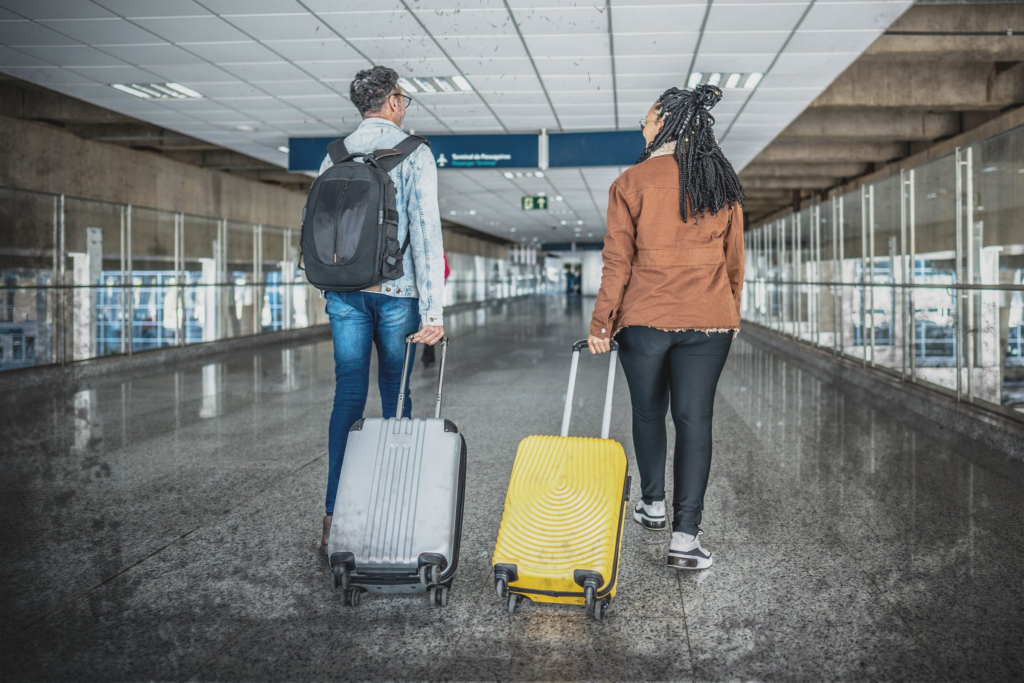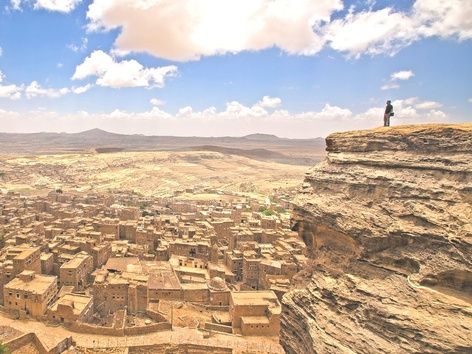Traveling is one of life’s greatest adventures. Yet, not every destination offers the same level of safety and security. Understanding travel risks is essential for every traveler. It’s about more than just packing your bags; it’s about preparing for what lies ahead.
Whether you’re dreaming of exploring ancient ruins or basking on remote beaches, it pays to know which countries pose potential dangers. Some places may have political instability, high crime rates, or health concerns that could affect your journey.
Table of Contents
The importance of understanding Riskiest Countries
This guide will shed light on the riskiest countries you might want to avoid or approach with caution while traveling. Knowledge is power when it comes to ensuring a safe and enjoyable trip. So buckle up as we take you through this important information!

In recent years, travel has become more accessible and affordable, leading to a rise in global tourism. While traveling can be an enriching and enjoyable experience, it is important to understand the potential risks involved in visiting certain destinations.
Some countries may pose higher risks to travelers than others due to factors such as political instability, crime rates, natural disasters, or health concerns. It is essential for travelers to be aware of these risks before embarking on their journey in order to stay safe and make informed decisions.
Understanding Travel Risks
Here are some reasons why understanding travel risks and knowing about the riskiest countries is important:
1. Personal Safety
The most significant reason for understanding travel risks is personal safety. By being aware of potential dangers in a specific country, travelers can take necessary precautions to minimize their risk of harm. This could include avoiding certain areas or activities that are known to be unsafe, or taking extra security measures such as hiring a local guide or traveling in a group.
2. Avoiding Scams and Fraud
Travelers are often targeted by scammers and fraudsters in popular tourist destinations. By understanding the common scams and fraudulent activities in a country, travelers can be more vigilant and avoid falling prey to these schemes.
3. Financial Security
Certain countries may have a higher risk of financial scams and theft. By understanding the level of risk in a particular destination, travelers can take precautions to protect their money and valuables.
4. Health Concerns
Traveling to some countries may pose health risks due to factors such as poor sanitation, lack of access to clean water, or the spread of infectious diseases. Being aware of these risks can help travelers take necessary precautions such as getting vaccinations or avoiding certain foods and drinks.
5. Legal Issues
Laws and regulations vary from country to country, and what may be considered acceptable or legal in one place may not be in another. By understanding the laws and cultural norms of a particular destination, travelers can avoid unknowingly breaking the law and facing legal consequences.
Riskiest Countries for Travelers:
1. Afghanistan
Due to ongoing political instability and high levels of violent crime, Afghanistan is considered one of the most dangerous countries for travelers. The threat of terrorism is also very high in this region.
2. Syria
The ongoing civil war in Syria has led to widespread violence, making it an extremely risky destination for travelers. The U.S Department of State has issued a Level 4 travel advisory for Syria, urging Americans to avoid all travel to the country.
3. Iraq
Iraq has also been affected by ongoing conflict and political instability, making it a risky destination for travelers. The threat of terrorism is high in this region, and travelers are advised to exercise extreme caution if visiting.
4. Somalia
Somalia is considered one of the most dangerous countries in Africa due to ongoing civil war, high levels of violent crime, and piracy along its coast. The U.S Department of State has issued a Level 4 travel advisory for Somalia, urging Americans not to travel to the country.
5. Yemen
Yemen is currently facing a humanitarian crisis due to ongoing conflict and political instability. The threat of terrorism and kidnapping is also high in this country, making it a risky destination for travelers.
6. Venezuela
Venezuela has been facing economic and political turmoil for several years now, leading to a rise in crime rates and shortages of essential goods. Travelers should be aware of these risks when visiting this country.
7. North Korea
North Korea is known for its strict authoritarian regime and lack of individual freedoms. Travelers are heavily monitored and restricted in their movements while visiting this country, making it a risky destination.
8. South Sudan
South Sudan has been plagued by conflict and political instability since gaining independence in 2011. The U.S Department of State has issued a Level 4 travel advisory for the country, urging Americans to avoid all travel due to the high threat of violent crime and armed conflict.
9. Central African Republic
The Central African Republic has been affected by ongoing conflict and political instability, leading to high levels of violence and crime. The U.S Department of State has issued a Level 4 travel advisory for this country, urging Americans not to travel there.
10. Libya
Libya is currently facing ongoing conflict and political instability, making it a risky destination for travelers. The U.S Department of State has issued a Level 4 travel advisory for Libya, warning Americans not to travel there due to the high threat of terrorism and kidnapping.

In conclusion, understanding travel risks and knowing about the riskiest countries is crucial for ensuring a safe and enjoyable trip. By being aware of potential dangers and taking necessary precautions, travelers can minimize their risk of harm while exploring new destinations. It is always recommended to thoroughly research a country before planning a trip and stay updated on any potential risks or safety concerns.
What makes a country risky?
Traveling to a new country can be thrilling, but some nations carry inherent risks. Several factors contribute to a country’s risk level.
Political instability is a primary concern. Changes in government or civil unrest can create dangerous situations for travelers.
Crime rates also play a significant role. High levels of theft, violence, or organized crime make certain areas less safe for visitors.
Health risks cannot be overlooked either. Outbreaks of disease or inadequate healthcare systems can pose serious threats.
Environmental hazards are another factor to consider. Countries prone to natural disasters like earthquakes or floods create additional challenges for those exploring their landscapes.
Cultural differences might lead to misunderstandings and potentially risky encounters if not navigated with care. Awareness is key when assessing travel safety in any destination.
Riskiest countries and their specific dangers
Traveling can open doors to incredible experiences, but some destinations come with heightened risks.
Afghanistan tops the list due to ongoing conflict and terrorist threats. Visitors face significant dangers from violence and instability.
Syria remains perilous as civil war continues. The threat of armed confrontation is ever-present, making it a no-go zone for most travelers.
In Yemen, humanitarian crises complicate safety. Food shortages and political unrest add layers of danger for anyone considering a visit.
Venezuela faces economic turmoil alongside high crime rates. Street crime poses risks in urban areas, especially after dark.
South Sudan grapples with internal strife, leading to violent clashes that can erupt unpredictably.
North Korea restricts movement severely. Travelers may also encounter harsh penalties for perceived missteps against local laws.
The Central African Republic struggles with militia activity. Instability makes travel unpredictable and hazardous at times.
Haiti suffers from gang violence and natural disasters. Safety concerns mount amid these persistent issues affecting everyday life.
Somalia’s piracy problem extends beyond its waters; land-based threats are equally alarming due to lawlessness across regions.
Iraq still deals with remnants of conflict despite improvement efforts—terrorist activities remain a concern in certain areas.
Precautions to take while traveling to these countries
When venturing into the riskiest countries, preparation is key. Stay informed about current events and local conditions. Monitor travel advisories issued by your government for real-time updates.

Always register with your embassy upon arrival. This step can provide crucial assistance in emergencies or unforeseen situations.
Keep a low profile while traveling; avoid flashing valuables or discussing sensitive topics with strangers. Dress modestly to respect local customs.
Carry copies of important documents like your passport and insurance details, both digitally and physically stored separately from the originals.
Establish a communication plan with family or friends back home so they know how to reach you at all times.
Consider enrolling in travel safety programs that teach self-defense or emergency response skills tailored for high-risk areas. Being proactive enhances your confidence on foreign soil, ensuring a more enjoyable experience amidst potential challenges.
Alternatives and safer destinations
If you’re looking for safer alternatives to visit, consider countries with lower risk profiles. Places like Portugal or New Zealand offer stunning landscapes and rich cultures without the same level of danger.
In Southeast Asia, Thailand and Vietnam are popular among travelers. They provide vibrant atmospheres, delicious food, and welcoming locals while maintaining a relatively safe environment.
For those who crave adventure but want to steer clear of risks, Costa Rica is an excellent choice. Its biodiversity makes it perfect for nature lovers and offers countless opportunities for exploration without significant safety concerns.
Even within regions deemed risky, you can often find pockets of safety. Researching specific cities rather than entire countries might reveal hidden gems that promise enjoyable experiences in a secure atmosphere.
Embrace the opportunity to explore new destinations while prioritizing your well-being by choosing wisely.
Tips for staying safe while traveling abroad
Stay aware of your surroundings. This simple act can significantly enhance your safety. Keep your belongings close and be cautious of distractions.
Research local customs before arriving. Understanding cultural norms can help you avoid misunderstandings and potentially dangerous situations.
Always have a backup plan for communication. Download essential apps or carry an international phone card to stay connected with family or friends back home.
Use reputable transportation options. Opt for licensed taxis or rideshare services instead of hitching a ride from strangers.
Trust your instincts when interacting with locals. If something feels off, don’t hesitate to remove yourself from the situation.
Keep copies of important documents like passports and IDs in a secure location away from the originals. In case of loss or theft, this will simplify any necessary reporting processes.
Tell someone about your itinerary. Share details with trusted contacts so they know where you are at all times while abroad.
Conclusion: The choice is yours – to avoid or be cautious while traveling to risky countries
Traveling is one of life’s greatest adventures. However, when it comes to the riskiest countries, the stakes can be high. Understanding the specific dangers associated with these destinations empowers you to make informed decisions.
Each country on our list has unique challenges that could impact your travel experience. Whether it’s political instability, health risks, or high crime rates, being aware allows you to navigate potential pitfalls.
Choosing whether to avoid these locations or approach them with caution depends heavily on personal risk tolerance and preparedness. Some travelers thrive in challenging environments and find rewards in exploring less-traveled paths. Others may prefer safer alternatives where they can fully enjoy their journey without added stress.
Regardless of your choice, knowledge is key. Equip yourself with information about local customs and current events before venturing out. Connect with fellow travelers who share insights about their experiences in risky areas.
Every traveler holds the power to choose how they engage with the world around them—so weigh your options carefully as you plan your next adventure into potentially risky territories.
Click here for related details.
Stay tuned on Travelyas for insight details.

